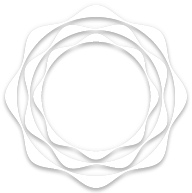Beirut a Cultural Hub (1955-1975) Cesar Nammour
As seen through the Eyes of: A patron, an artist, a professor, and a gallerist
Author WAFA ROZ

Beirut a Cultural Hub (1955-1975)
The Dalloul Art Foundation (DAF) presents a four-part documentary series on the evolution of the art scene in Beirut during the 1950s-1970s. The series is based on life-history interviews which were conducted and filmed by DAF in 2020. The interviews chosen for this exhibition cover the social transformations that transpired during the three decades following Lebanon’s independence in 1943. The four protagonists in the series include an art patron, Cesar Nammour; a sculptor, Mona Saudi; a professor, David Kurani; and a gallerist, Odile Mazloum. Each of these characters lived during Beirut’s heydays, otherwise known as the “golden sixties,” and experienced first-hand the booming cultural scene of the city. Most importantly, they participated in making that scene.
Through personal narratives, this four-part documentary series narrates a key feature of the golden sixties: the blossoming of Beirut’s art scene into a vibrant and diversified cultural hub. It also narrates the story of the dispersal of that cultural hub after the onset of the Lebanese civil war in 1975. Artists relocated and cultural spaces shutdown during the war, including art galleries and art institutions, forcing many to cope and adapt to a new social reality. In a state of fragility, a mélange of passion and despair shines through each personal narrative.
During Lebanon’s formative decades of state-building (1952-1970), Beirut was becoming the cosmopolitan center of the Arab world. The financial sector thrived within the country’s free-market economy. Educational institutions and instructional spaces ballooned alongside publishing houses, galleries, and museums. Most notably, a café society flourished, part of which was the famous Horseshoe café that attracted many intellectuals and artists. Lebanon’s diverse social fabric, religious pluralism, and laisser-faire economy attracted investors, thinkers, writers, and artists from all around the Middle East, Europe, and the United States. Knowledge production and freedom of expression became a staple of Beirut’s golden era. For most of the Arab world, Lebanon became a safe haven of free expression and free association.
However, this period of state-building was also one of political contestation over Lebanon’s place in the Arab World. The Lebanese political scene was heavily affected by regional and international political antagonisms. The country’s political environment was caught up in a fierce political struggle between adherents of pan-Arabism versus Lebanese nationalism and leftist movements versus right-wing politics. In addition, the Arab-Israeli conflict, and the relocation of the Palestinian Liberation Organization (PLO) to Lebanon in (1968-1982) heightened political tensions. After a series of political struggles, the Lebanese civil war broke out in 1975. Cosmopolitan Beirut was at an impasse.
The violence of the war divided Beirut into West and East Beirut. As a result, several art spaces shifted away from central Beirut and relocated to other regions in Lebanon. Key art patrons, artists, and innovators of the pre-war era adapted to a new disruptive reality that shaped the art scene in the post-war years.
The Ramzi and Saeda Dalloul Art Foundation, 2022
This video was exhibited at the Contemporary Art Museum of Lyon in the Beirut and the Golden Sixties: A Manifesto of Fragility, as part of the Lyon Biennal. Curated by Sam Bardaouil and Till Fellrath.
Biography
Cesar Nammour – ‘a patron’ (1937-2021)
Born in 1937, in Rabieh, Lebanon, Cesar Namour was an industrialist and an art patron who closely followed the visual arts evolution in Lebanon since 1959. He received his BBA from the American University of Beirut and an MBA from the American University in Washington DC. During his long career in the art scene, he established three art galleries. First, he co-founded Contact art gallery on Hamra street, Beirut, in 1972, along with his former wife, Mireille Tabet, and his friend, Iraqi graphic designer Waddah Fares.
Then in 1978, at the heat of the Lebanese civil war, Nammour closed Contact art gallery which was located in West Beirut. He moved to East Beirut and opened Les Cimaises in 1982 and Art et Culture in 1993 both in Zouk Mosbeh.
Nammour wrote several books on Lebanese artists and established the Fine Arts Publishing house. Later, with his life partner, Gabriela Schaub, he co-founded Recto Verso Library in 2009, the Festival of Lebanese Art Books in 2010, which was later known as the Beirut Art Book Fair, and the Monot Street Book Market in 2011.
In 2012 Nammour and Schaub established the Modern and Contemporary Art Museum (MACAM) in Alita, Lebanon. The space was a former industrial factory floating on a hill overlooking the historical city of Byblos. The realization of such a visionary project offers to date, a place to showcase modern and contemporary visual art created by Lebanese artists. Cesar Nammour passed away in May 2021, at the age of Eighty-Four.
Check out other Beirut a Cultural Hub documentaries:
Beirut a Cultural Hub (1955-1975) Mona Saudi
Beirut a Cultural Hub (1955-1975) David Kurani
Beirut a Cultural Hub (1955-1975) Odile Mazloum


